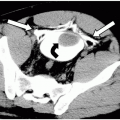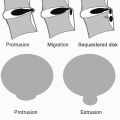Dosimetry
Joseph P. DiPietro
Exposure is a measure expressing the intensity, strength, or amount of radiation in an x-ray beam, based on the ability of radiation to ionize air. It is a measure of the total charge of electrons liberated per unit mass of air by the x-ray photons. Conventional units are the roentgen (R); SI units are coulombs per kilogram (C/kg). Key concept: exposure follows the inverse square law, and decreases with the square of the distance from the source.
Absorbed dose, (D) is a measure of radiation energy deposited per unit mass of a medium such as human tissue. It is expressed in gray (Gy). One gray is equivalent to an energy deposition of 1 joule per kilogram (J/kg) of medium. The conventional unit is the rad, and 100 rad = 1 Gy.
Key concept: human tissue damage from radiation depends not only on the absorbed dose (D) of the radiation, but also the type of radiation affecting the tissue. For example, an α-particle is much more damaging than an x-ray. This is taken into consideration by equivalent dose.
Equivalent dose (H) is the absorbed dose (D) multiplied by a weighting factor for each type of radiation WR and allows comparison of biological damage caused by different types of radiation. It is given by the equation H = D × WR. X-rays, ã rays, and β particles have a WR of 1, whereas α particles have a WR of 20, as they are more damaging. It is expressed in rem or Sieverts (Sv), and 1 rem = 0.01 Sv.
Key concept: just as each different type of radiation causes a different biological effect on tissue, each tissue has a different sensitivity to the radiation it is exposed to. In other words, the same radiation to the gonads is more damaging than to the hands. This brings in the concept of effective dose.
Effective dose (E) is the equivalent dose H times a weighting factor WT for each organ that is being exposed to the radiation. E = H × WT. The WT for the gonads is 0.25, whereas the WT for bone is only 0.03.
Key concept: as radiologists choosing an appropriate study for a patient, we require a measurement that allows us to compare the radiation exposure to the entire patient to evaluate the potential risks and benefits of the study. The effective dose equivalent is the measurement that allows us to do so.
Effective dose equivalent (HE) is a weighted sum of the individual organ doses of the entire body taking into account the type of radiation and also the sensitivity of each organ to that radiation. The effective dose equivalent is expressed in rem or Sv. Key concept: a table of effective dose equivalents such as the one provided in this chapter (Table 67-1), allows a comparison of common procedures used in radiology. With this table, the radiologist can give clinicians and patients a relative comparison of the radiation exposure resulting from a radiograph of the chest compared with that from a computed tomography (CT) of the chest.





